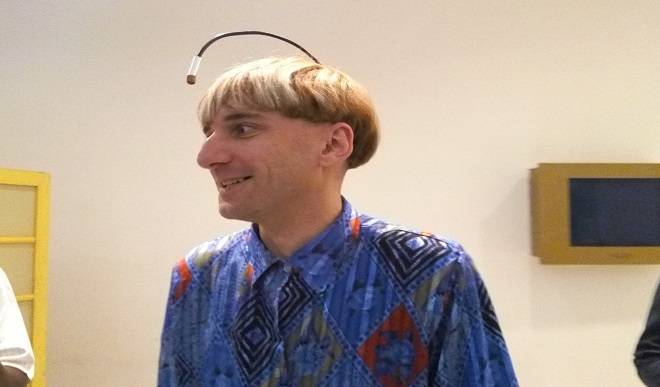11 things to know about Neil Harbisson, world’s first ‘human’ cyborg
With rapid advance in technology, many tasks which are hitherto difficult have been simplified by humans. Same way, we have been using technology to improve our physical and cognitive abilities, especially in today’s business world. From virtual reality, machine learning to artificial intelligence and human augmentations, people are embracing the digital transformation to improve human […]


With rapid advance in technology, many tasks which are hitherto difficult have been simplified by humans. Same way, we have been using technology to improve our physical and cognitive abilities, especially in today’s business world.
From virtual reality, machine learning to artificial intelligence and human augmentations, people are embracing the digital transformation to improve human conditions and perceptions.
One of such people is Neil Harbisson, the world’s first officially recognised ‘human’ cyborg, who clocks 36 on July 27, 2018.
Using technology, Harbisson can now ‘hear’ colours, thanks to an antenna-like implant that boosts his perception of light and gives him super-senses.
He was in Lagos recently at an event organised by SAS and our reporter engaged him in a brief chat.
Here are eleven things to know about this cyborg artist:
1. Neil Harbisson was born colour-blind. That is, whatever colour he sees is always in grayscale.
2. Harbisson is the son of a Catalan mother and a Northern Irish father.
3. He installed a fully-functioning antenna in his skull in 2004. The "cyborg" antenna – as he calls it – turns colours into music notes, which enables him to sense colours beyond human vision, such as infrared and ultraviolet. For about 14 years now, he has been able to “hear” visible and invisible wavelengths of light. An antenna-like sensor implanted in his head translates different wavelengths into vibrations on his skull, which he then perceives as sound.
4. At age 22, he became world’s first officially recognised cyborg after the UK government allowed the inclusion of his antenna in his passport photograph.
 |
| Neil Harbisson is a British citizen who was the first legally recognised cyborg in the world. |
5. He says he enjoys eating music. For instance, he said he can put different coloured food on a plate and arrange them such that he creates "a song", giving him the ability to "eat music". Also, he’s fascinated about visiting shopping malls as he feeds his soul with sounds he ‘hears’ from colourful displays in the malls.
6. Harbisson performs musical pieces with colour. He has created musical pieces inspired by his ability to hear colours. The below video shows him performing in London with different coloured socks.
7. He links colours to music and says listening to sounds inspires his art. Harbisson has also created art pieces based on the colours of musical pieces and songs, as shown below:
 |
The colour visualisation of Beethoven’s Fur Elise. PHOTO: Neil Harbisson
8. He now has many new body parts (computer chips or sensory devices implanted in his body) such as the ‘Solar Crown’ for decoding sense of time and Bluetooth Tooth, a form of Transdental Communication System which contains a bluetooth enabled button and a mini vibrator, among others. One Bluetooth tooth was installed in Harbisson’s mouth and the other in Moon Ribas’ mouth. Since both Harbisson and Ribas know how to communicate in Morse code, thus they are able to communicate from tooth to tooth.
9. He says humans have limited number of senses adding that we should be allowed to have more senses beyond the natural ones we currently possess through artificial intelligence. “Emerging technologies will enable us connect with nature. This type of union between humans and technology will unite us with nature again,” he said.
 |
10. Harbisson alongside cyborg activist and artist, Moon Ribas, set up Cyborg Foundation in 2010 where they “teach people the art of creating creating your own senses and body parts (organs) and the art of designing your own perception of reality.” Currently, the non-profit organisation encourages humans across the world to become cyborgs.
11. He’s very optimistic that all humans will, in the future, become trans-species. “We will all decide what senses and organs we want to have as species. In the future, it will be easier and easier in the future as technology becomes cheaper and more available for everyone. And it will be easier for people to decide what they want to become as species. This will bring a lot of diversities and we need to start accepting these diversities in the society,” Harbisson said.
